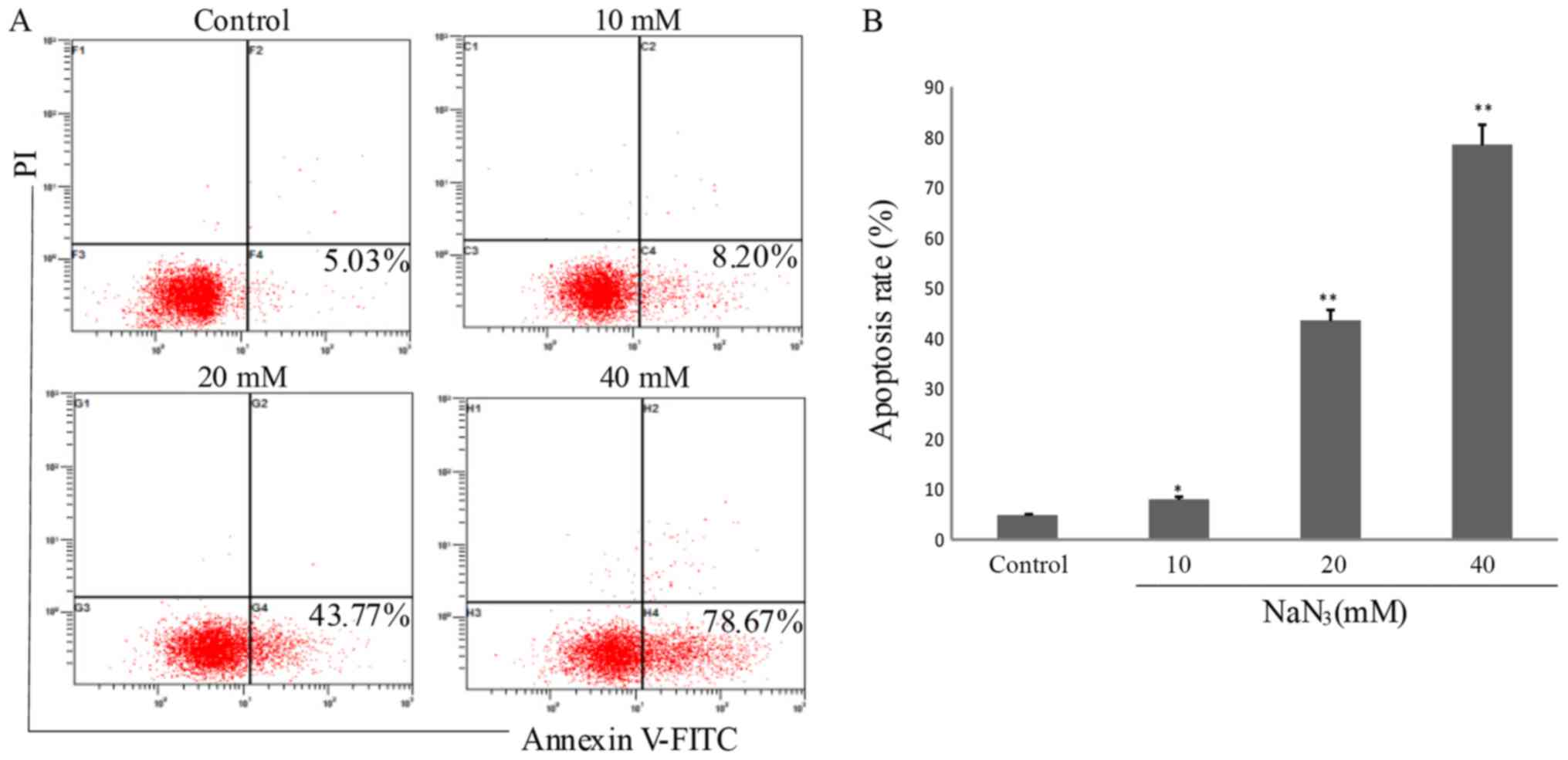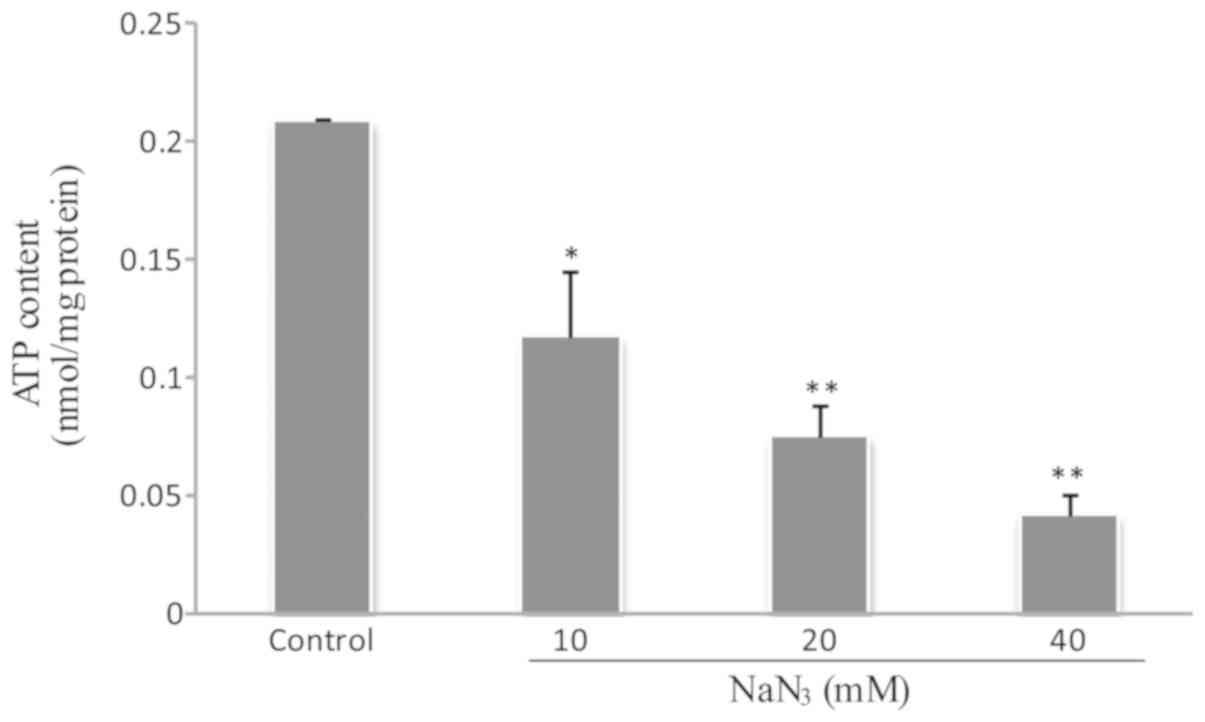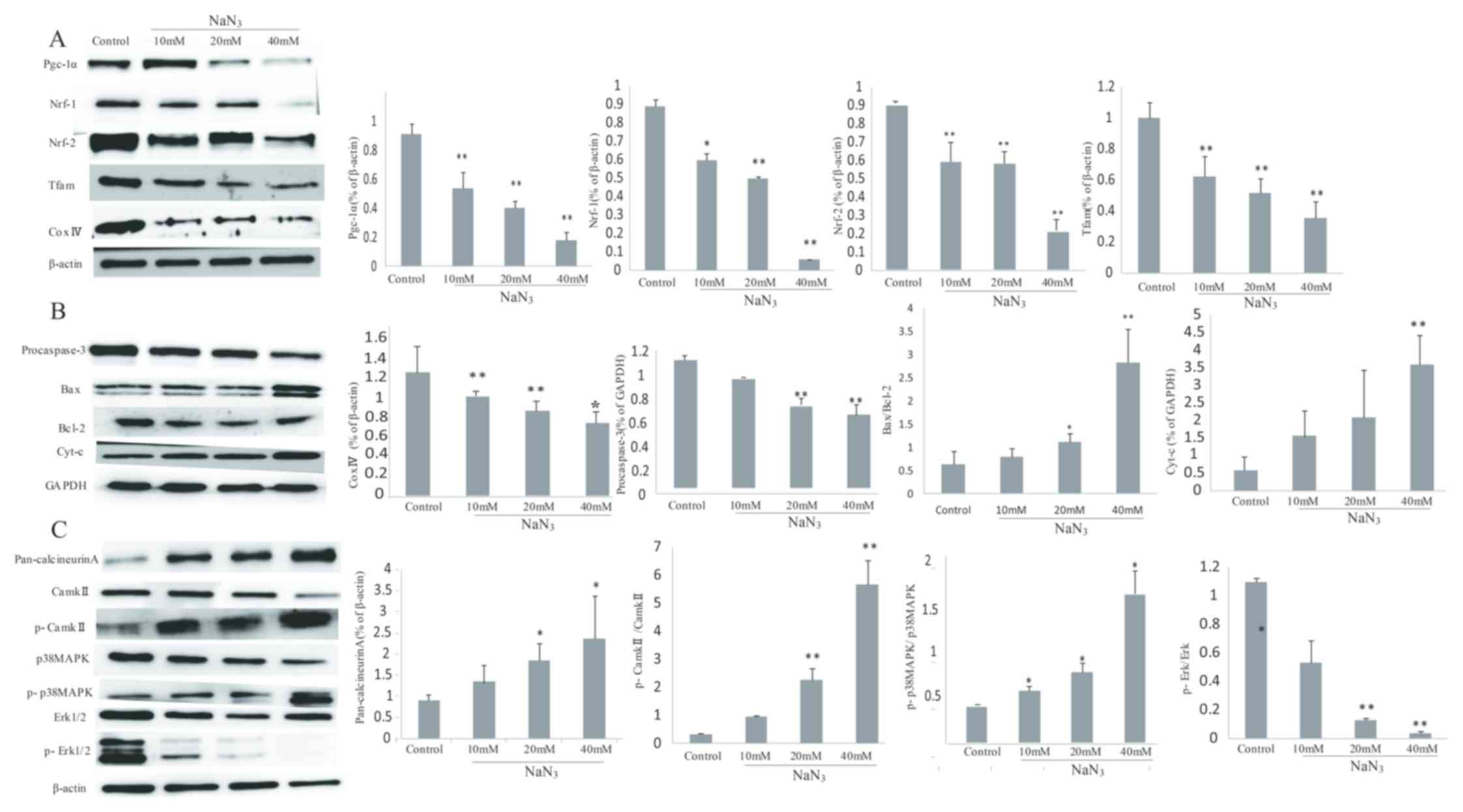Sodium azide induces mitochondria‑mediated apoptosis in PC12 cells through Pgc‑1α‑associated signaling pathway
- Authors:
- Published online on: January 14, 2019 https://doi.org/10.3892/mmr.2019.9853
- Pages: 2211-2219
-
Copyright: © Zuo et al. This is an open access article distributed under the terms of Creative Commons Attribution License.
Metrics:
Total
Views: 0 (Spandidos Publications: | PMC Statistics:
)
Total PDF Downloads: 0 (Spandidos Publications: | PMC Statistics:
)
Abstract
Sodium azide (NaN3), an inhibitor of cytochrome oxidase, induces the release of excitotoxins via an energy impairment and this, in turn, results in neurodegeneration. The present study aimed to investigate the toxic effects NaN3 on apoptosis of PC12 cells and its mechanism of action in peroxisome proliferator‑activated receptor γ co‑activator 1‑α (Pgc‑1α)‑associated signaling pathways. To induce apoptosis, PC12 cells were exposed to NaN3 (0, 5, 10, 20, 40 and 80 mM) for 12, 24, 48 and 72 h. Cell viability was determined by CCK‑8 assay. DAPI staining was employed to additionally examine apoptotic cells and their nuclear changes. Production of reactive oxygen species (ROS), mitochondrial membrane potential (ΔΨm) and apoptotic rate were also assessed by flow cytometry. Cellular ATP content was estimated by firefly luciferase assay. In addition, the expression levels of B‑cell lymphoma 2 (Bcl‑2), Bcl‑2‑associated X protein (Bax), phosphorylated (p)‑Ca2+/calmodulin‑dependent protein kinase (CaMK), p‑p38 mitogen‑activated protein kinase (p38 MAPK), Pgc‑1α, nuclear respiratory factor (Nrf)‑1, mitochondrial transcription factor A (Tfam), p‑extracellular signal‑regulated kinase (Erk)1/2, Nrf‑2 and complex IV (Cox IV) were determined by western blot analysis. The data suggested that NaN3 may induce PC12 cell injury and dose‑dependently decrease the cell viability. The expression levels of pro‑apoptotic proteins Bax and cytochrome c were upregulated, while the expression levels of anti‑apoptotic proteins procaspase‑3 and Bcl‑2 were downregulated. In addition, the phosphorylation of MAPK and Ca2+/calmodulin‑dependent protein kinase II (CaMKⅡ) family members including pan‑calcineurin A was increased, in particular the ratios of p‑p38/p38 and p‑CaMKⅡ/CaMKⅡ. However, the expression levels of Pgc‑1α and its associated proteins, including Nrf‑1/2, Tfam and p‑Erk1/2 were decreased. In addition, mitochondria were the target organelles of NaN3‑induced toxicity in PC12 cells, which moderated the dissipation of ΔΨm, preserved the cellular ATP content, promoted the production of ROS and increased the apoptotic rate. These results suggested that NaN3 induced cell death in PC12 cells via Pgc‑1α‑associated signaling pathways and provided a theoretical basis for additional investigation of the neurotoxic mechanism of NaN3, with applications in neurodegenerative disorders.
















